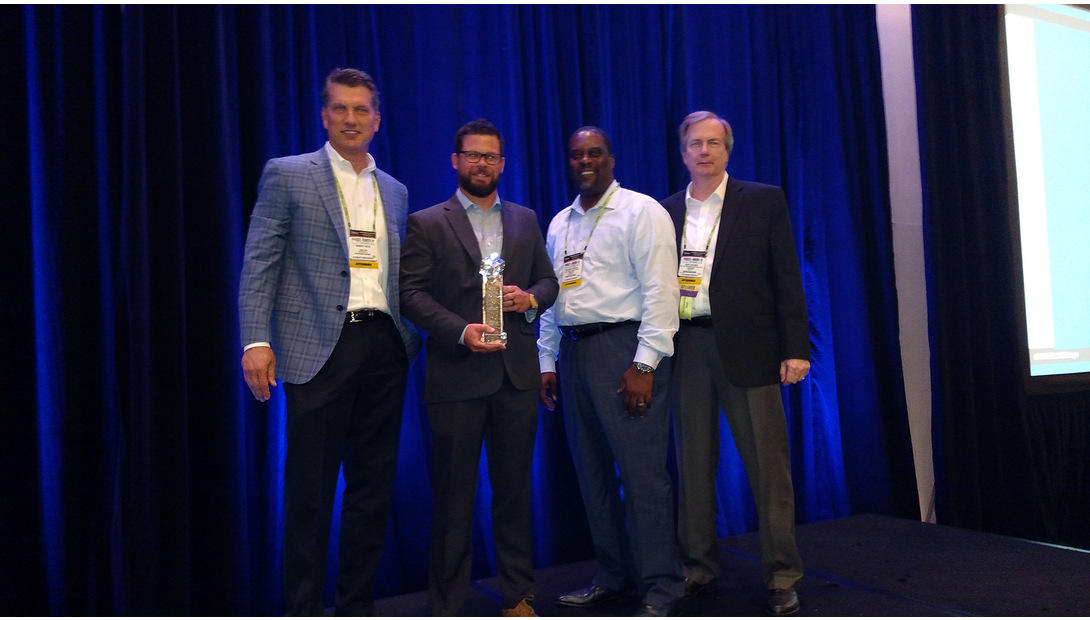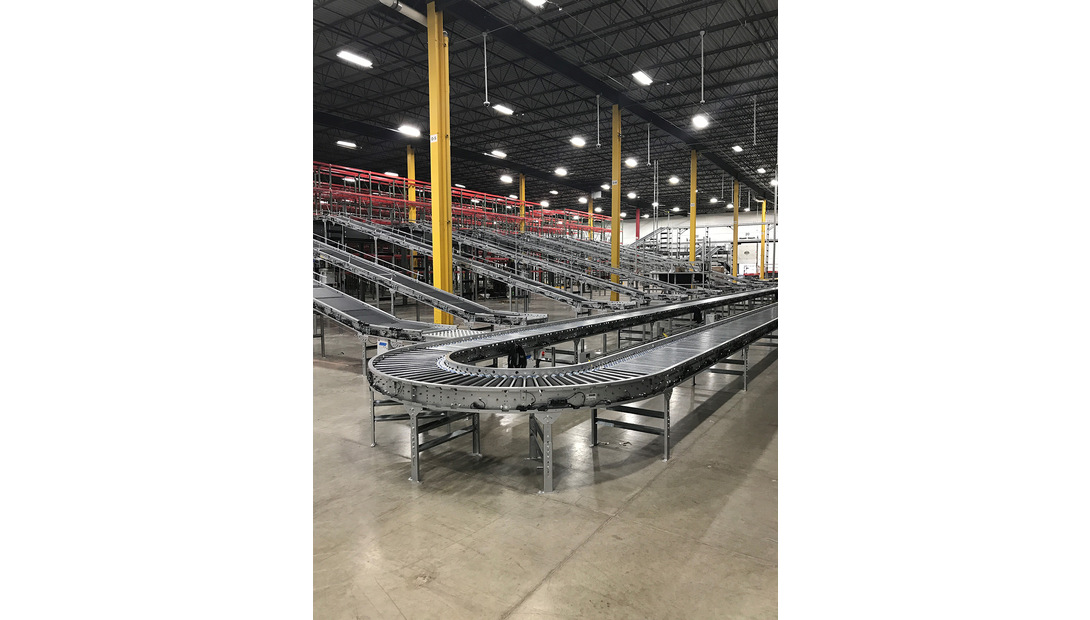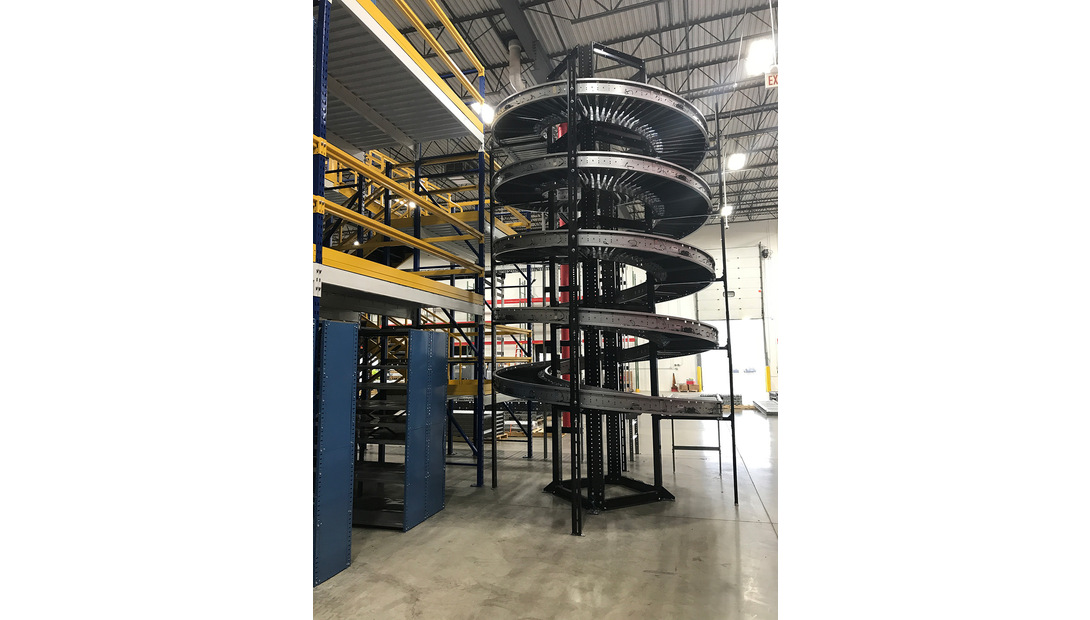It’s always an enlightening exercise when the PARCEL Forum advisory board and staff select the winner of the Game Changer of the Year award, which is presented at our conference every fall. Every year since the award’s inception in 2015, we have received some truly phenomenal submissions from shippers who are truly taking their parcel game to the next level. 2018 was no different, and while we received several outstanding nominations from companies who are innovating their supply chain, there was no question that the award should go to Anixter after seeing what they had done — and are continuing to do — with their supply chain operations.
Located in Glenview, Illinois, Anixter is a leading global distributor of network and security solutions, electrical and electronic solutions, and utility power solutions. Anixter has the largest and broadest wire and cable product offering in the world and is the industry leader in providing solutions for every security application, including transportation, data centers, residential, commercial, retail, public safety, government, education, healthcare, natural resources, industrial, manufacturing/factory floor, and utilities. Anixter boasts a broad base of customers, including industrial and OEM customers, as well as integrators, end users, public/private utilities, and contractors.
The company prides itself on its mission of building, connecting, powering, and protecting valuable assets and critical infrastructures. Through its unmatched global distribution network, Anixter helps lower the cost, risk, and complexity of their customers’ supply chains — which is no small task. When we received Anixter’s nomination form back in 2018, we were immediately intrigued to see what challenges a company of this magnitude was facing as well as how these problems were solved. Orlando McGee, Executive Vice President of Global Operations, sat down with PARCEL after the award was announced to share some insight.
“First of all,” he explains, “Anixter’s business model is unique in that we are comprised of several segments with distinct requirements. For example, our NSS business is primarily pick, pack, and ship from an operations perspective, in this facility specifically, with additional emphasis on the contractor services community. The EES business provides a different challenge in that it is focused on services and value-added activity, related to a specific set of electrical cabling.” Anyone who has been in this industry for any length of time knows that having separate sets of business requirements often means separate sets of challenges, and it was no different for McGee. However, he gladly rose to the occasion.
“When I joined the organization two years ago, I was asked to take a greenfield warehouse near our primary distribution center in Alsip, IL and create a campus environment, where we could begin to utilize technology to drive productivity gains, efficiencies, and cost reduction,” he shares. The problems that needed to be solved were varied. The first major issue was how to manage a pick, pack, and ship environment and a value-add service-oriented model out of the same facility, while still maintaining high levels of productivity and customer service. The second significant challenge was how to deliberately introduce warehouse technology into Anixter's distribution environment to make the productivity improvements that many other organizations, such as Amazon and Grainger, have experienced.
The reason the Alsip campus was chosen for this innovation was because, as McGee explains, of the unique nature of the activity that occurs in the facility in particular. Alsip is Anixter’s largest distribution center, shipping products globally, and it is the single source of many SKUs, which also creates a single source of failure. Furthermore, at the Alsip campus, the NSS and security offerings are supported primarily by parcel shipping, as the nature of this product makes parcel the most appropriate mode to utilize. Given these factors, “It became obvious to me — and my team — that automating this facility and segregating business units would provide long-term success for the organization,” McGee says.
Implementing the Idea
The strategy was very simple: Separate the two business units into distinct facilities on the campus that would support the unique nature of each business. “The model was built on the premise that we would create an automated environment for our pick, pack, and ship business, while modernizing and creating a center of excellence around our value-add activity in our cable cutting center,” McGee notes.
To start the process, Anixter partnered with enVista to design a technologically advanced, modern warehouse that would manage the NSS side of the business. “During the process of the design, we benchmarked with several organizations that had taken this journey either recently or in the past,” McGee explains. “The strategy that we decided on was to ensure that Anixter was developing an environment that deployed the correct technology for our business and did not get caught in the game of implementing technology for the sake of technology. Ultimately, we decided that space in the new building would be at a premium, [so] we needed to maximize the cubic space in the facility.”
Together, enVista and Anixter deployed a three-tiered picking module, which allowed Anixter to maximize its picking density, significantly reduce the travel path of employees, and provide substantial productivity improvements. To improve overall quality, the company introduced pick to voice, utilizing Bluetooth headsets and tablets to improve accuracy, safety, and quality in the pick environment. Finally, in an effort to reduce employee movement, make consolidation more efficient, and support efforts to move product to Anixter employees, the company installed over 5,600 square feet of smart conveyors, designed to minimize noise and ensure maximum up-time. Once the optimal state was realized in September of 2018, the distribution center saw an approximately 25% gain in productivity, with the associated cost reduction and efficiencies gains that will parallel pickups in quality and customer service.
The changes brought about by this automation could not be more pronounced. “Prior to introducing an automated environment, the process in our Alsip facility was very manual,” McGee explains. “One of the concepts that we were looking to eliminate was the need for our employee to walk to the product vs. moving the product to our employees. Our Wmx system did allow for scanning of picks within an order, but that was the extent of the automation we deployed in our facility. In addition to the overall movement of our employees, there was a very manual consolidation process that we were looking to eliminate. The time required to move product to a consolidation point greatly hampered productivity.” On the contrary, the new system utilizes “smart conveyor technology, and pick-to-voice allows for seamless movement of product through pick zones within our tiered pick module, not to mention the elimination of unnecessary movement by employees.” This system also pushes consolidated LTL shipments into the consolidation area, limiting forklift traffic during the heaviest time of the day.
And Anixter isn’t done innovating. “We are [also currently] looking at IoT and associated smart devices to deliver advanced and predictive analytics to support maximum up-time and advance warning for preventative maintenance activity,” McGee shares. “To complete our overall strategy, Anixter will begin the redesign of our center of excellence cable cutting center in 2019, providing a modern technologically advanced campus to support both of our primary businesses.”
This strategy proposed by McGee and his team was, at its core, simply doing what made the most sense given Anixter’s business goals, and the team couldn’t be happier with the results. Taking the greenfield space across the parking lot from the original facility gave McGee and his team a unique opportunity to split the inventory into two separate facilities, thereby creating an environment that could focus on the attributes particular to each product set. Inventory in the newly automated facility focuses primarily on pick, pack, and ship inventory associated traditionally with the NSS and security businesses. The automation provides speed and greater through-put, as well as picking efficiency and higher quality. The original facility is now primarily focused on value-added services, such as cutting, twisting, and dyeing of cable product, as well as managing and shipping Anixter’s large reels of cabled product. McGee is thrilled with the results these changes have brought about. “So far,” he says, “we have seen increased through-put and higher quality of the product moving through our automated warehouse, and greater attention to detail on complex services in our cutting center.”
I can’t wait to hopefully chat with some of the pros from Anixter at the 2019 PARCEL Forum, which will be held October 28-30 in Dallas; I’d love to hear what further successes they have achieved!
This article originally appeared in the January/February issue of PARCEL.





















![GettyImages-1288486122-[Converted]](https://cms-static.wehaacdn.com/parcelindustry-com/images/GettyImages-1288486122--Converted-.1781.widea.0.jpg)


